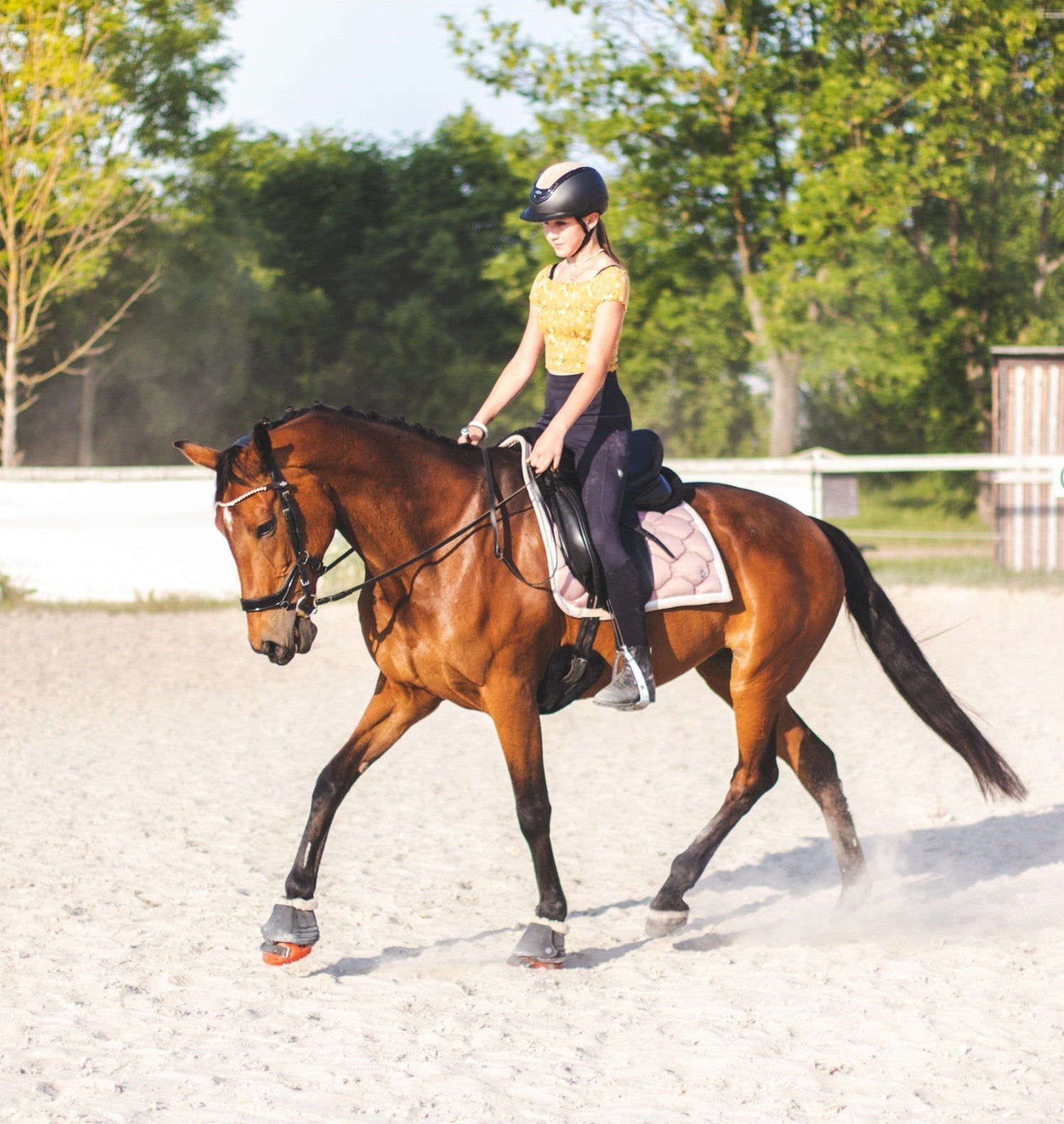Renegade® Hoof Boots are designed to be quick and easy to put on your horse - and even easier to take off! No mallets to bang the boot on, no hoof picks to lever straps into place - no force required! Your hoof boots should slip on smoothly, and allow you to easily slide the heel captivators up and into place. Renegades are designed to fit the shape of the horse's hoof, and the patented pivoting heel captivator design means that the boot can flex and move with your horse's hoof.
A safety note for the first time putting hoof boots on your horse - Most horses are fine Renegade hoof boots right away, as the boots are light and don’t restrict their hoof movement. However, every horse is different, so the first time you put boots on please do this in a clear area, with someone holding the lead rope rather than tying your horse. Lead your horse gently forward to get the feel of the boots, then let him spend some time in an arena or similar enclosure with the boots on, until you are satisfied there won't be a reaction. We recommend you seek the help of an equine professional if you are unsure about your safety at any time using hoof boots.
How to install your horse's Hoof Boots
If you're a visual learner, watch this short video explainer! Want a printable pdf? Otherwise, read on for 4 simple steps.
1. Check hoof boots and hooves are clean
Always inspect your hoof boots before use to be sure they are clean, and all parts (cables, straps, heel captivator, boot and tread) are in good condition, the correct fit, and correctly adjusted for your horse.
And of course, please ensure your horse's hooves are picked out and clean.
Undo the pastern strap and the toe strap of your boots and pull the heel captivator down below the boot sole.
2. Pick up the hoof and insert into the hoof boot
The hoof should easily slide into the hoof boot shell. If you have to force it on, the hoof boot is too small. If the boot normally fits, maybe your horse is overdue for a trim. Check the center of the hoof boot's tread aligns with the center of the horse's heel to ensure the boot is straight.

Give the hoof boot a couple of taps with your palm on the toe to ensure it is sitting flush, then slide the heel captivator well up onto the heel bulbs. If the heel captivator is tight, you may need to adjust the cables.

Place the hoof onto the ground and double check the heel captivator position. Here is a full article on this, and a short video too.

3. Fasten the tension strap
The tension strap is the lower one that goes across the hoof boot. Wriggle the strap sideways so that the steel cables each side of the velcro have around an inch clearance from the plastic keepers. If there is too much cable showing when the strap is done up, you will need to adjust the cables.
Place the fingers of one hand on the pulley side of the cable to hold it still, then pull the end of the velcro strap across to remove any slack, and fasten it, secure the end of the strap by pushing it under the rubber keeper loop. Make sure that the velcro is centered on the hoof while fastening, as this helps keep the hoof boot balanced and secure.
It is not necessary to use any force or tighten the strap too much, you just need a nice snug fit. Imagine tightening the laces on your own shoes - the strap should sit "snug" but not "tight".

4. Fasten the pastern strap
This is the top strap, and note that it should not be tight. You should be able to slip FOUR fingers under the strap (or three if you have large hands). The pastern strap must be loose enough to flex with the horse's hoof movement - this is why we created our patented pivoting heel design. The pastern strap is NOT the main thing that keeps the hoof boots on, this is the job of the heel captivator. Learn more about strap tension here.
Tuck the strap end back under the keeper if it sticks out.


Enjoy your ride, with barefoot hoof protection!
Each horse owner will need to experiment with tension settings to discover what works best for the way your horse moves, the speed you ride and where you ride. Always start with 'looser' settings, and work your way up to more 'snug' if needed. If you are having boot retention problems, making straps 'super tight' is NOT the solution, it will cause issues.





